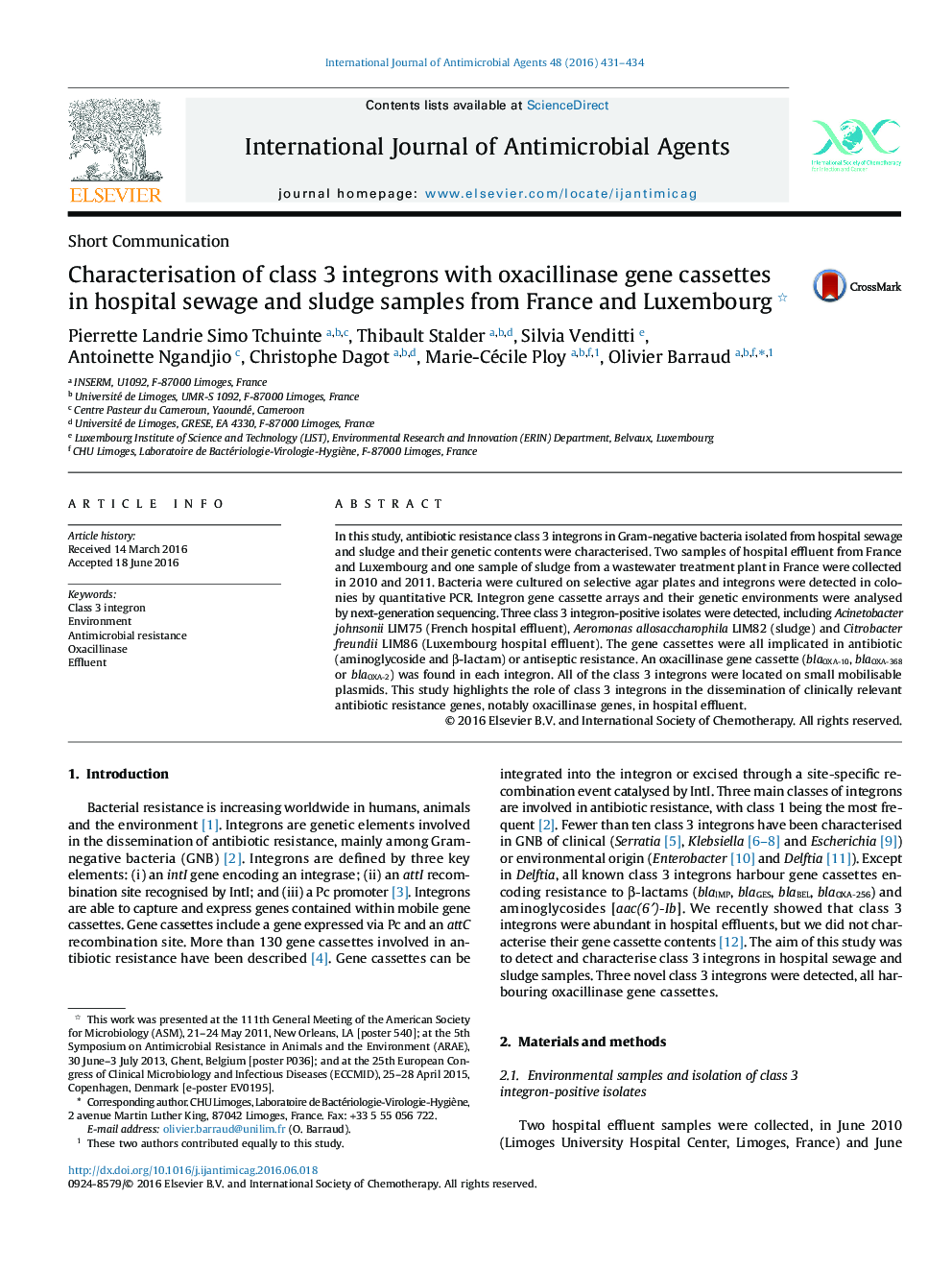| Article ID | Journal | Published Year | Pages | File Type |
|---|---|---|---|---|
| 3358380 | International Journal of Antimicrobial Agents | 2016 | 4 Pages |
•Three novel class 3 integrons are characterised from sludge and hospital effluents.•The gene cassettes are all involved in antibiotic or antiseptic resistance.•All of the class 3 integrons were located on small mobilisable plasmids.•Hospital environment is a reservoir for class 3 integrons with antibiotic resistance genes.
In this study, antibiotic resistance class 3 integrons in Gram-negative bacteria isolated from hospital sewage and sludge and their genetic contents were characterised. Two samples of hospital effluent from France and Luxembourg and one sample of sludge from a wastewater treatment plant in France were collected in 2010 and 2011. Bacteria were cultured on selective agar plates and integrons were detected in colonies by quantitative PCR. Integron gene cassette arrays and their genetic environments were analysed by next-generation sequencing. Three class 3 integron-positive isolates were detected, including Acinetobacter johnsonii LIM75 (French hospital effluent), Aeromonas allosaccharophila LIM82 (sludge) and Citrobacter freundii LIM86 (Luxembourg hospital effluent). The gene cassettes were all implicated in antibiotic (aminoglycoside and β-lactam) or antiseptic resistance. An oxacillinase gene cassette (blaOXA-10, blaOXA-368 or blaOXA-2) was found in each integron. All of the class 3 integrons were located on small mobilisable plasmids. This study highlights the role of class 3 integrons in the dissemination of clinically relevant antibiotic resistance genes, notably oxacillinase genes, in hospital effluent.
